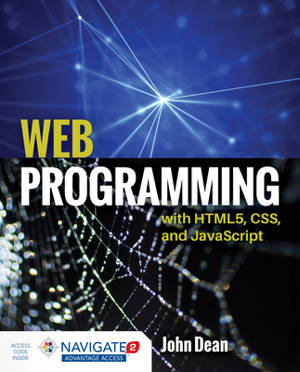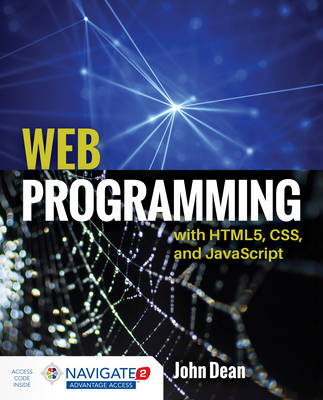
- Afhalen na 1 uur in een winkel met voorraad
- Gratis thuislevering in België vanaf € 30
- Ruim aanbod met 7 miljoen producten
- Afhalen na 1 uur in een winkel met voorraad
- Gratis thuislevering in België vanaf € 30
- Ruim aanbod met 7 miljoen producten
Zoeken
Omschrijving
Web Programming with HTML5, CSS, and JavaScript is written for the undergraduate, client-side web programming course. It covers the three client-side technologies (HTML5, CSS, and JavaScript) in depth, with no dependence on server-side technologies. One of the distinguishing features of this new text is its coverage of canvas, one of the most important new features of HTML5. Topics are presented in a logical, comprehensive manner and code is presented in both short code fragments and complete web pages, allowing readers to grasp concepts quickly and then apply the concepts in the context of a complete web page. Each chapter concludes with an optional case study, which builds upon itself to create a sophisticated website. The case studies allow students to apply what they have learned and gives them a feel for the real-world design process. Written in a fun, conversational tone to engage readers in the learning process Presents content in a way that helps develop creativity and problem-solving skills Case Studies close out each chapter and discuss the creation of an increasingly sophisticated website Strikes an appropriate balance between short code fragments and complete web pages so readers are able to grasp new concepts quickly and apply those concepts in the context of complete web pages Includes three types of homework problems at the end of each chapter -- review questions, exercises and projects Instructor resources include Slides in PowerPoint format, Exercise and Project solutions, Test Bank, and Additional Projects (c) 2019 678 pages
Specificaties
Betrokkenen
- Auteur(s):
- Uitgeverij:
Inhoud
- Aantal bladzijden:
- 678
- Taal:
- Engels
Eigenschappen
- Productcode (EAN):
- 9781284091793
- Verschijningsdatum:
- 23/01/2018
- Uitvoering:
- Paperback
- Formaat:
- Trade paperback (VS)
- Afmetingen:
- 185 mm x 229 mm
- Gewicht:
- 1016 g

Alleen bij Standaard Boekhandel
+ 343 punten op je klantenkaart van Standaard Boekhandel
Beoordelingen
We publiceren alleen reviews die voldoen aan de voorwaarden voor reviews. Bekijk onze voorwaarden voor reviews.








